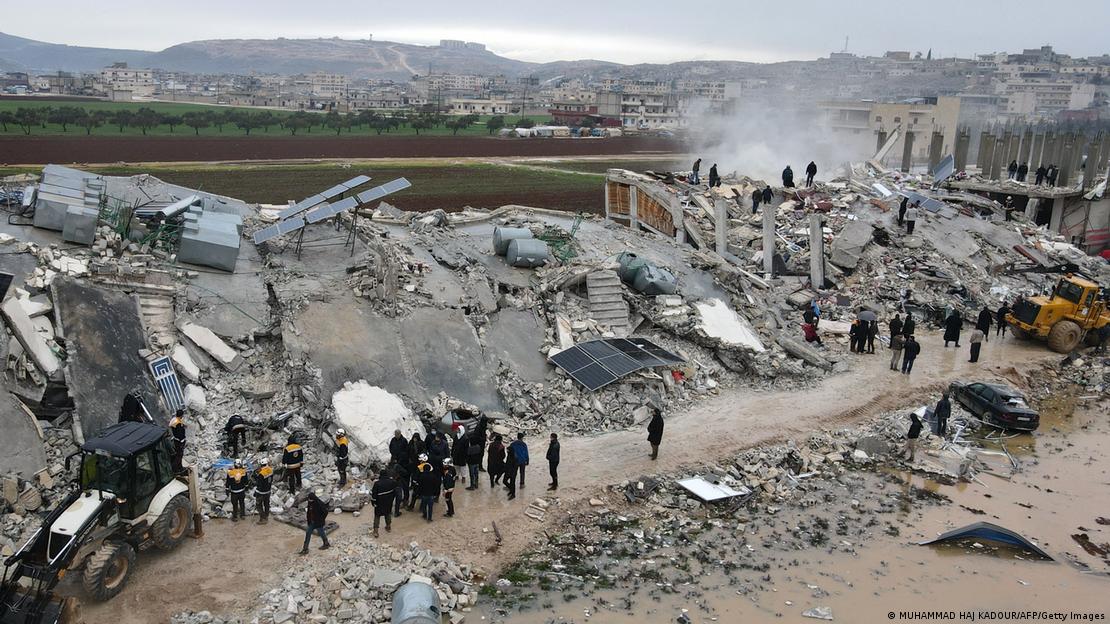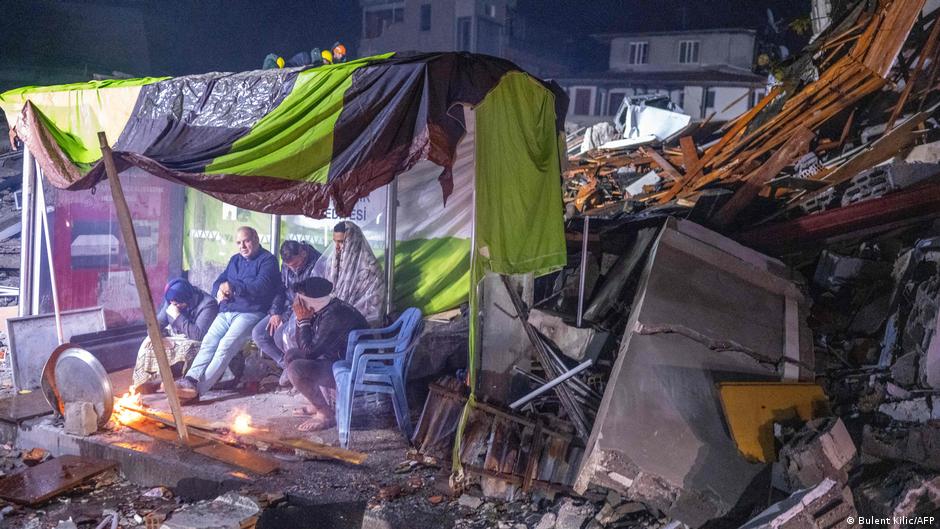Weak buildings, shallow shock caused deaths

The 7.8-magnitude earthquake that struck near the Turkey-Syria border Monday and its aftershocks have caused immense damage across the area, killing more than 21,000 people and wiping out many multi-storey buildings.
Other earthquakes of similar magnitudes have seen much lower death counts – fatalities in the 2014 and 2015 earthquakes in Chile with respective magnitudes of 8.2 and 8.3, for example, did not exceed 15. So what are the reasons for such massive destruction this time around?
Old buildings not designed for earthquakes
Videos from cities near the epicentre have captured a devastating form of collapse some call "pancaking" – this happens when an entire building falls, each storey collapsing one on top of the other. The chance of survival for someone in a pancaked building is slim. Multi-storey buildings that experience this sort of destruction are likely old and have a "soft-storey" design, said Mehdi Kashani, associate professor of structural and earthquake engineering at the University of Southampton, United Kingdom.
A soft-storey building has floors with windows, wide doors and other openings in places where an actual solid wall would be better for withstanding an earthquake. When one of these storeys is located on the bottom floor of the building, the entire structure can come down with it. Although some buildings in earthquake-prone areas along the Turkey-Syria border are now built to withstand the earth's tremors, many were constructed before seismic design was conceived.

"The basic principles started being developed in the 1960s and 70s, so it's not that old," said Kashani. "The Kobe earthquake [in Japan] in 1995 was a big, big, big pivot point in changing a lot of things that went wrong in that earthquake and resulted in more research. So essentially, late 1990s, early 2000s, is when many of these [seismic] codes began to change."
Seismic codes are regulations governing how to build in areas close to fault lines. Buildings not constructed in line with seismic design were especially vulnerable in Monday's earthquake. Kashani said older buildings can be retrofitted to better withstand earthquakes – this has happened in Japan and Chile, where quakes are frequent. However, he said, this requires money and political will and therefore does not happen everywhere it should.
How to make buildings more stable
According to Lamia Messari-Becker, a civil engineering professor at the University of Siegen in southwest Germany, earthquake-proofing a building depends largely on the specific structure. But the design itself can generally be guided by some basic questions. First, she said, engineers start by looking at the ground. They'll ask: what is the risk of an earthquake here? Does building in this specific spot make sense? What are the soil conditions? What are suitable foundations?
One way to build a safe structure in an earthquake-prone area, she said, is to decouple it from the sub-soil via stilt-like constructions, which helps mute vibrations from the ground to the building. Adding weights to high-rise buildings can also help, Messari-Becker said, adding that connecting details are also important.
"It is possible to connect beams and columns in such a way that in the event of a shaking, although the connections are damaged, they go into a new (plastic) state of deformation," she said. "They stretch, but do not collapse."
UPDATES: #Syria #Turkey
- Death toll passes 21,000
- UK pledges additional $3.6m to White Helmets in Syria
- US issues Syria general license to aid relief efforts
- Turkey moved by more than 3 meters following quakes
Live coverage here⤵️ https://t.co/Mw5mY4WTZO— Middle East Eye (@MiddleEastEye) February 10, 2023
The earthquake was shallow
But the damage is not only due to building design. The power of the earthquake itself was unforgiving. According to Kashani, the quake was shallow. This means the shock of the plate tectonics colliding happened closer to the surface, making the on-ground impact much stronger than if the shock had occurred deeper in the ground and had taken a longer time to reach the surface.
It is kind of like a wave in the ocean, Kashani said. Particularly massive waves will immediately knock a nearby surfer off his board. But once those waves have travelled through the ocean far enough, they will have little impact on even the most inexperienced surfers.
Whether an earthquake is shallow or deep helps explain why some earthquakes with relatively low magnitudes in comparison with others cause more destruction. Kashani mentioned the Bam earthquake that occurred in Iran in 2003. Despite having a magnitude of 6.3, which, in other circumstances, would have resulted in few if any casualties, the shallow quake killed more than 25,000 people.
[embed:render:embedded:node:49280]
Structure matters more than materials
Materials are not the most crucial part of ensuring a building's capacity to withstand an earthquake, Kashani said. Structure is more important. For example, he said, with the right design, concrete can provide a great foundation to earthquake-proof a building. But if improperly structured, a concrete building can crumble like those captured in the videos coming out of Turkey and Syria.
Currently seismic design allows for buildings to withstand very strong quakes without crumbling or falling down, which spares people nearby. But they still experience some damage, which Kashani said will likely improve in coming years.
In the following months, researchers will travel to the area of the earthquake in Turkey and Syria to study the buildings. They will try to understand which features allowed those that did not collapse to stay upright.
Clare Roth
© Deutsche Welle 2023